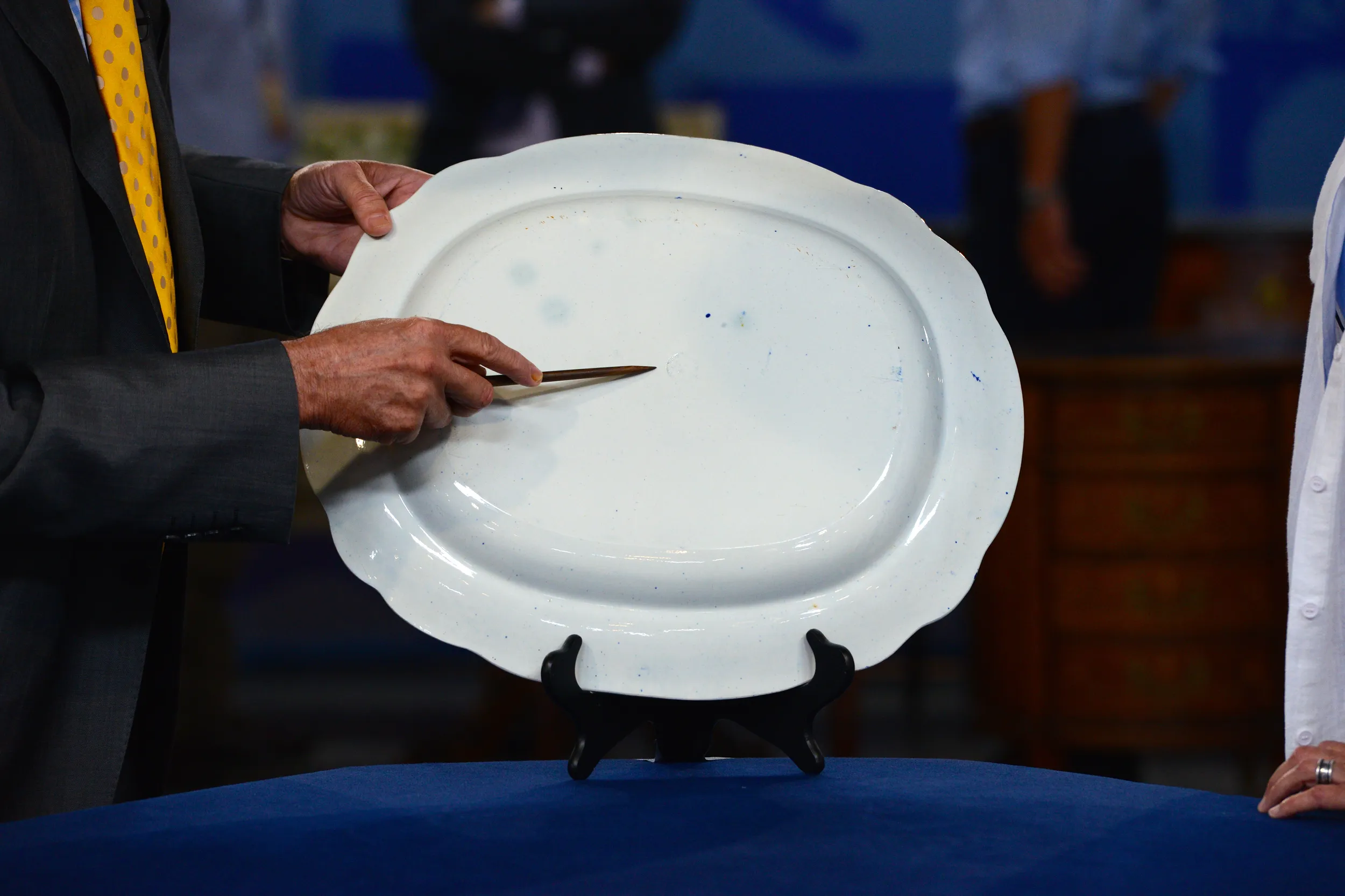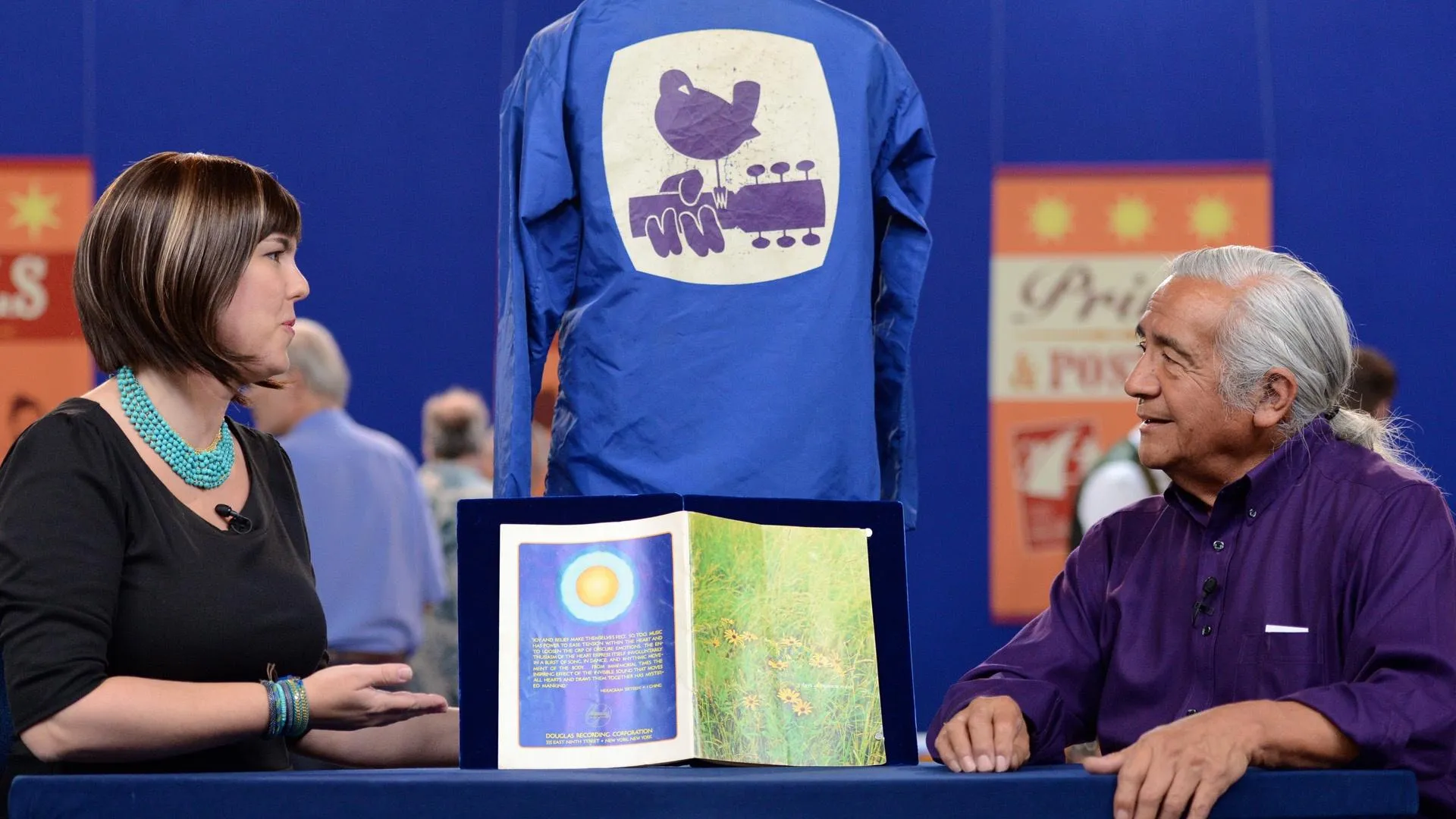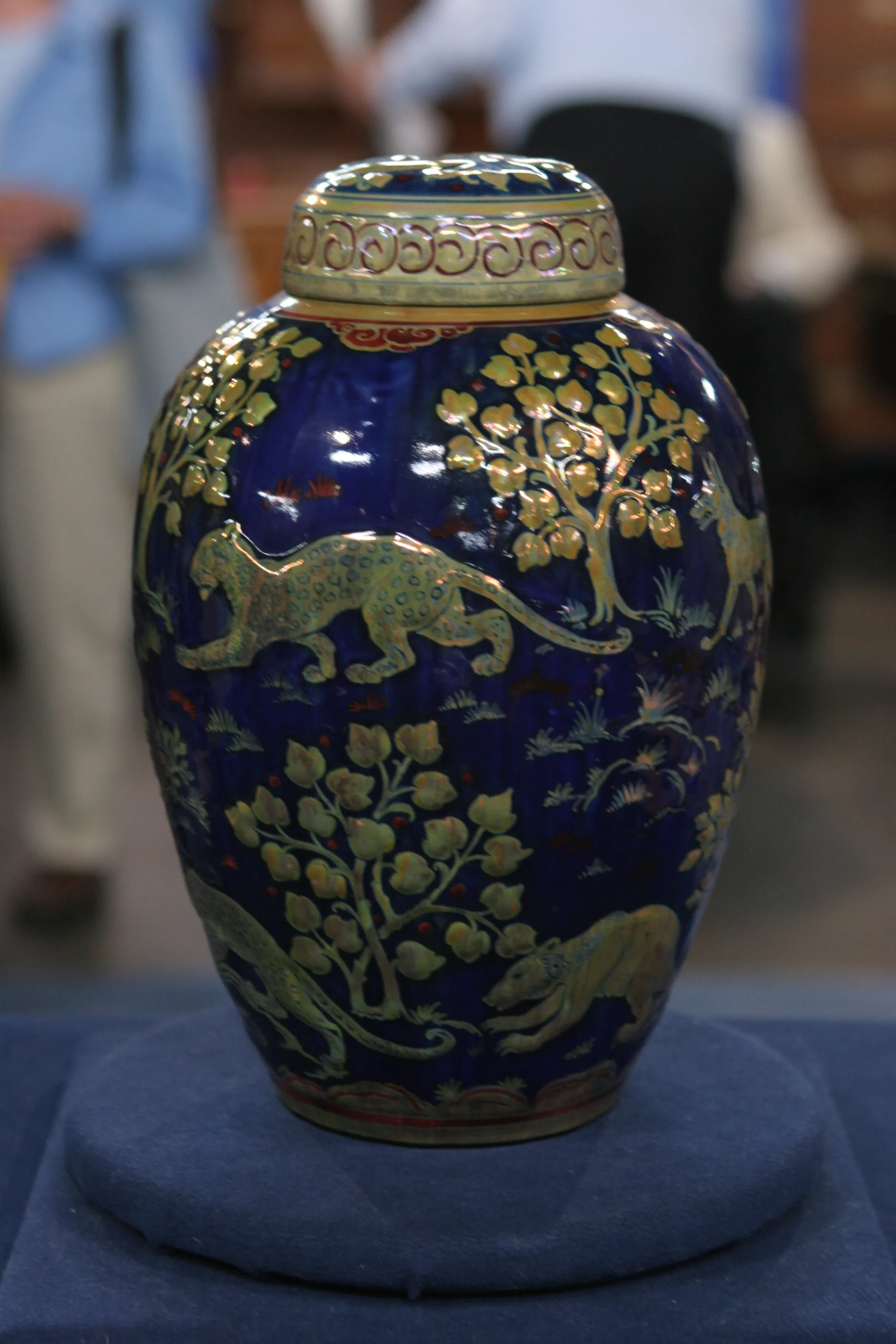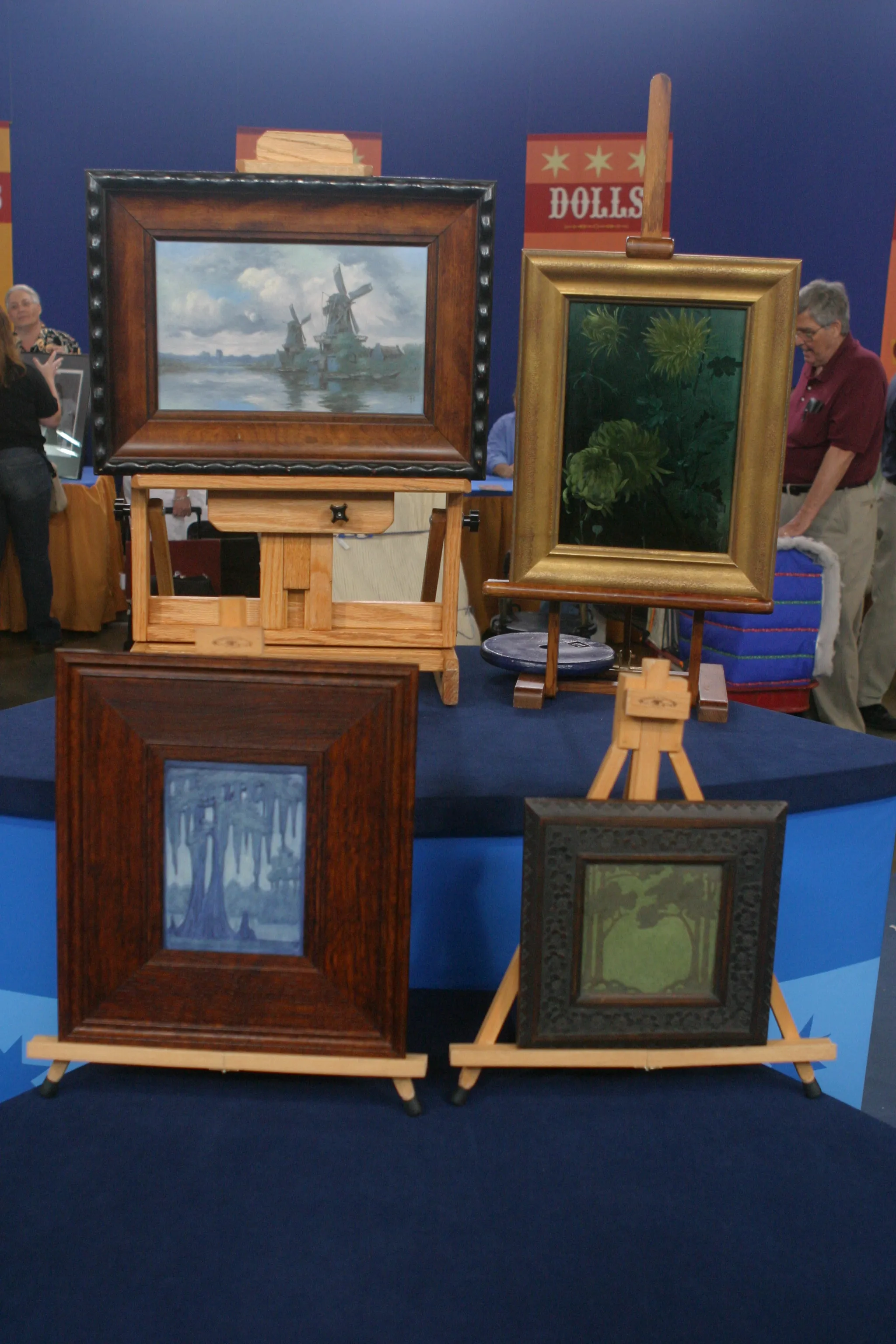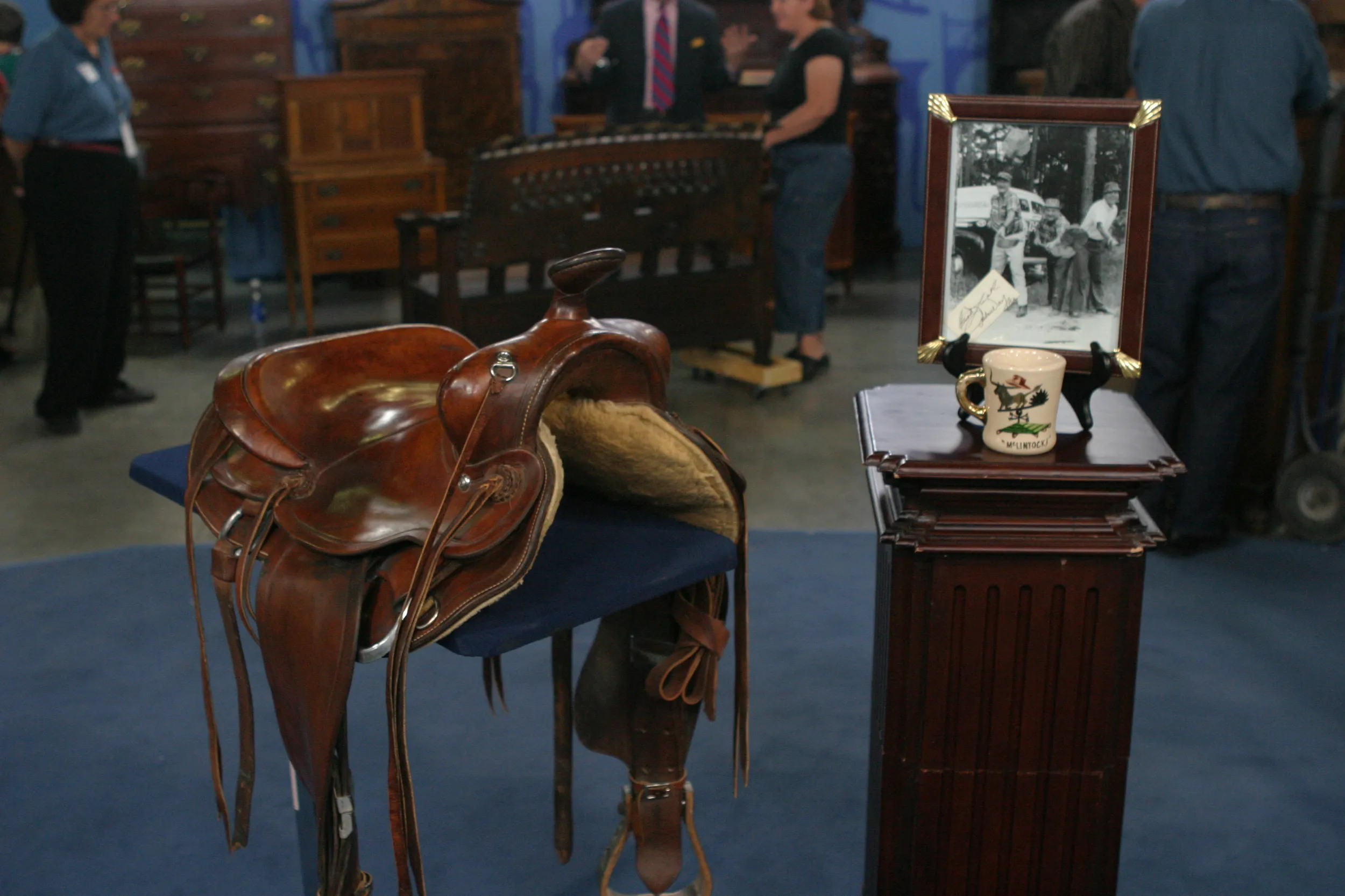GUEST: It was my father's mother. She was from Philadelphia. She came to New Mexico around 1918, and when I first saw this platter, it was always in her house in Santa Fe. Huge library, and it was high up behind her. As she sat in her settee, holding court, she'd be talking and I'd be looking at the platter. I fell in love with it then, and after she died, my parents let me have it.
APPRAISER: So when she came to Santa Fe, did you think she brought it with her, or did she get it later?
GUEST: No, no, I'm sure she brought it with her. I'm pretty sure it was a family piece.
APPRAISER: Santa Fe was a very small place back that long ago. I bet she knew a lot of interesting people.
GUEST: Oh! She entertained Igor Stravinsky, he played on her piano. She knew all the writers, all of the artists, and she knew everybody. I know it's blue, it has horses, there's a country house or plantation in the background, and I love it.
APPRAISER: This platter actually dates probably around 1810, 1820.
GUEST: Cool!
APPRAISER: And it was made in England, in the Staffordshire region. It was not expensive. It was exported probably to the United States and probably purchased new here. Philadelphia was a big port of entry for these types of wares.
GUEST: Oh, really?
APPRAISER: Staffordshire transferware like this is always made of pottery, which was a less expensive material than porcelain. It was never intended to be an antique, a family heirloom. It was just very good-looking, very attractive, everyday dishes. On here, we have several little spots, and here's one here, little white spots. There's four of them in the four corners. And those are stilt marks from when it was made in the kiln. In high-quality porcelains, they would hide those or they would not be there, but cheaply made ones would have that. If we turn it over on the back, we also see... Look at these big, blue spots right here.
GUEST: Oh!
APPRAISER: See those? And all these little... it's called peppering, little speckles on the back, that's a sign that it wasn't really great quality, it was just mass-produced for people to use every day. Now also on the back here, we do see a mark. And it's really hard to read, but it says, "Warranted Staffordshire Adams." Adams is the manufacturer. It's William Adams and Sons, and they were in the Staffordshire region, and they used this mark from about 1804 to about 1840.
GUEST: Oh, really?
APPRAISER: So it helps date it. And the largest percentage of their products that they made were made specifically to ship to America, because at that point, there were virtually no manufacturers of this type of thing in America. We see a lot of Staffordshire blue and white wares. It comes in different shades of blue, and a lot of collectors really love the really dark colors. But subject matter is very important, and the horses really make the value. People love horses. So because of the decorative appeal, this platter would have a retail value between $1,000 and $1,500.
GUEST: Wow.
APPRAISER: So it's a really great example of Staffordshire.
GUEST: That's cool. Really?
APPRAISER: Yeah.
GUEST: It's a good example?
APPRAISER: Sure.
GUEST: That's really far out, okay.

